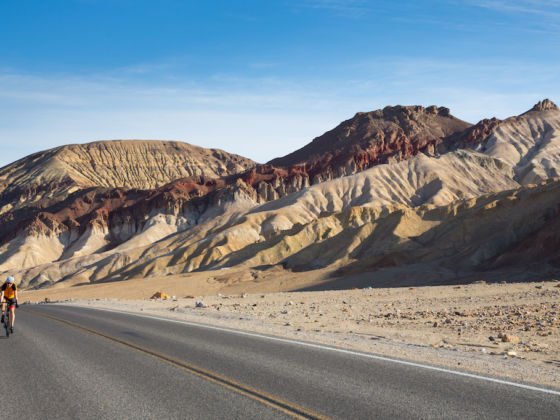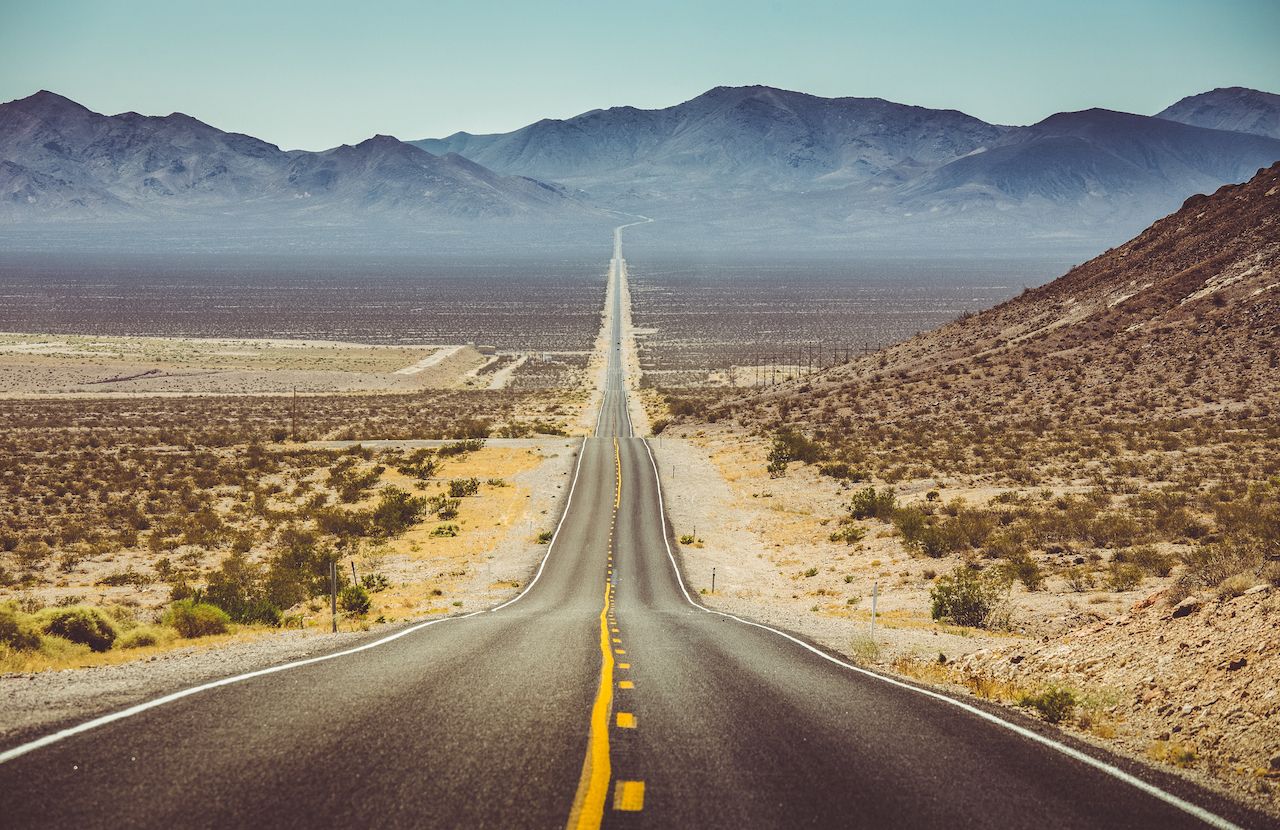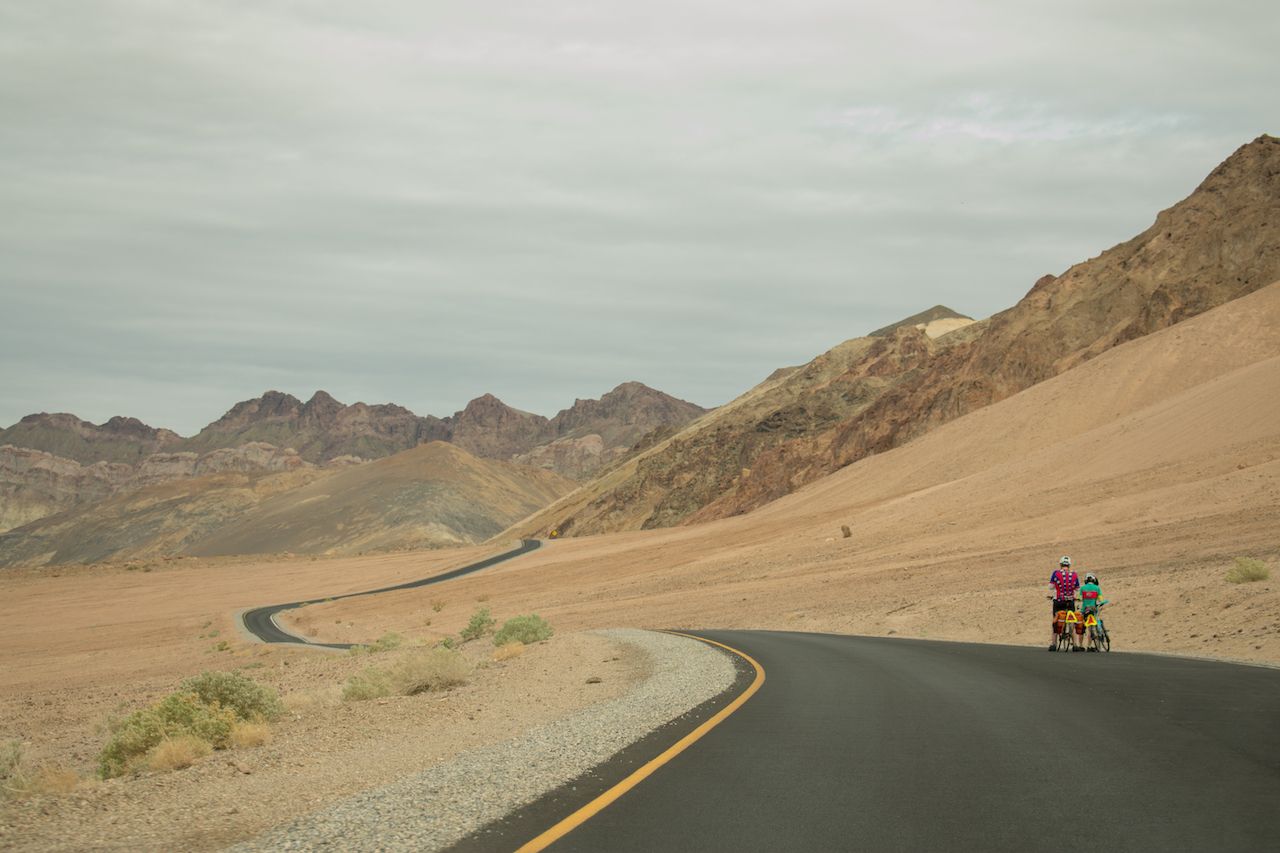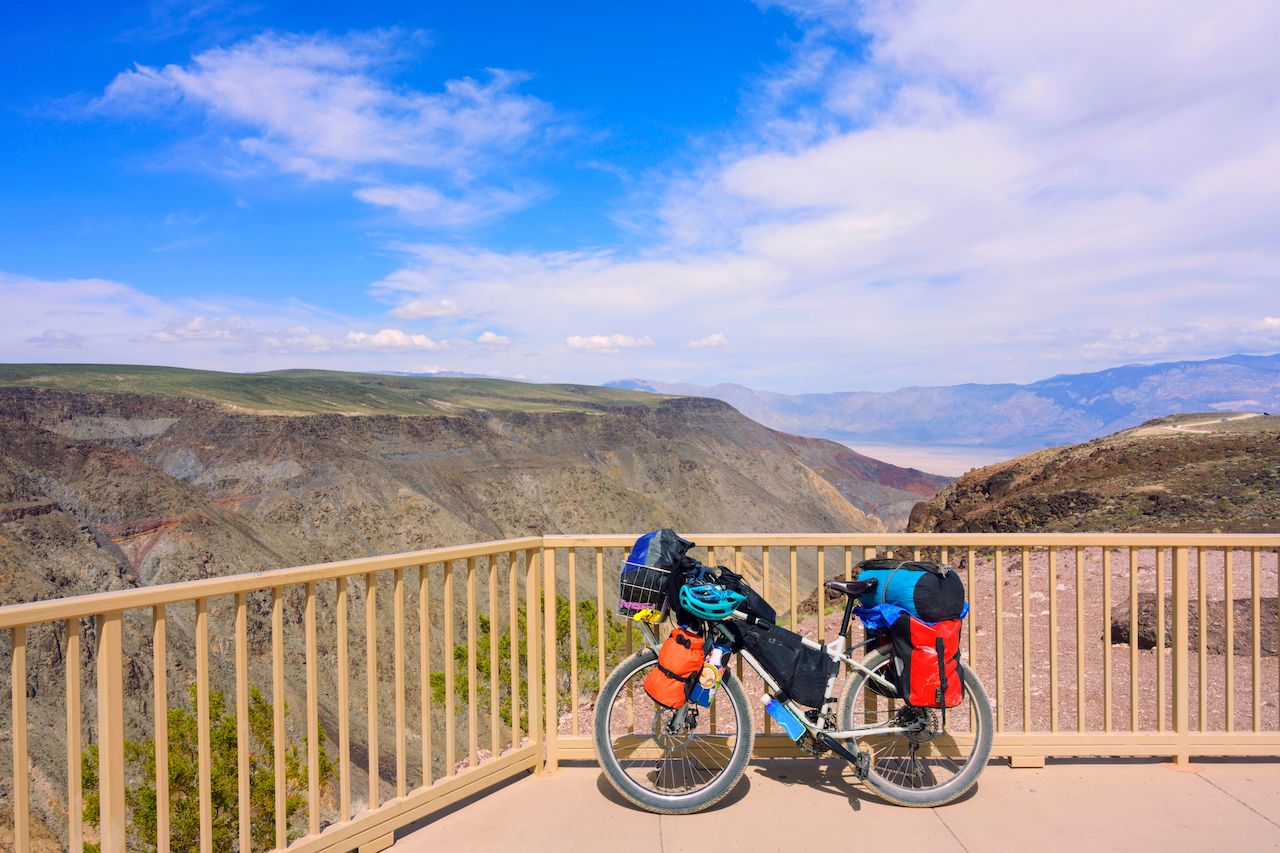The typical trip to Death Valley National Park is a quick one. Enter the park by car from the east or west side, stop at a handful of key spots for pictures, maybe take a short hike, and work your way out the other side. It’s hot — the average summer high temperature hovers around 110 degrees and is often higher, with the odds of an afternoon rainstorm to cool off the sweltering landscape landing, at best, slightly above no way in hell.
As such, this park in eastern California may appear to the casual national park enthusiast as a mere blip on an otherwise star-studded itinerary through America’s western heartland. But for anyone seeking a new take on the iconic national park, cycling across Death Valley may be your next adventure. Here’s how to make that happen, but be forewarned — be ready to sweat, grind, and curse yourself through one of the most rewarding excursions on federally protected land.




